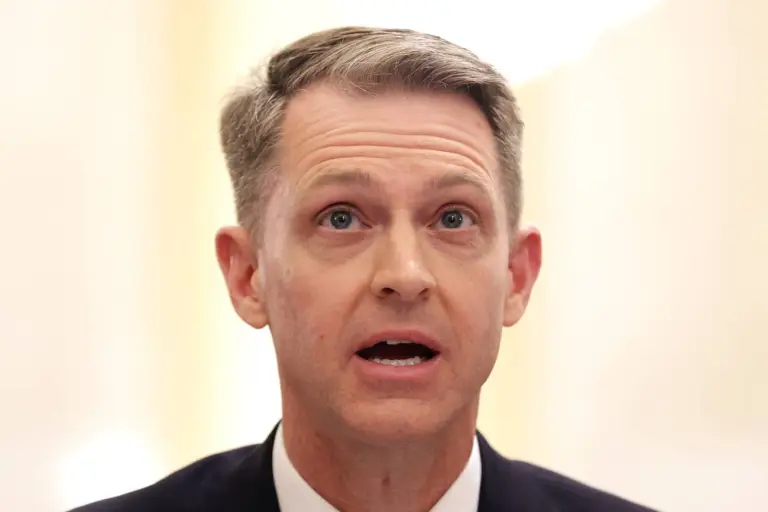**Alabama Bishop Dismissed Clergy Abuse Claim Later Found Credible in Michigan, Report Finds*
In a shocking revelation, a recently published report has shed light on how a claim of clergy sexual abuse was dismissed by an Alabama bishop, only for it to later be deemed credible in Michigan. The case highlights troubling issues surrounding how certain clergy abuse allegations were handled by church leaders and raises questions about accountability within the Church’s hierarchy.
The claim, which first surfaced years ago, involved an allegation of sexual abuse by a Michigan priest, who had been transferred multiple times within the dioceses of the Catholic Church. The victim, who was a young boy at the time of the abuse, came forward with the accusations, naming the priest as the perpetrator. However, when the initial complaint was raised, the Alabama bishop in charge of overseeing the Michigan priest’s activities dismissed the claim, dismissing it as unsubstantiated.
The victim’s claims were initially met with skepticism, despite the seriousness of the allegations. The dismissal came at a time when the Catholic Church had already been embroiled in a widespread scandal of clergy abuse cases, but some dioceses continued to downplay the gravity of these accusations. The Alabama bishop, whose name has been kept confidential pending further investigation, reportedly failed to conduct a thorough review of the claim, brushing it aside as inconclusive and not worth pursuing further. This decision would prove to be a pivotal moment, as the priest, who was assigned to various locations, continued to serve in other dioceses despite the ongoing concerns.
Years later, after further investigations by the Michigan diocese and the growing transparency movement within the Church, the same claim of abuse was re-examined. The investigation, prompted by a renewed focus on clergy abuse and mounting pressure from survivors, eventually found the allegation to be credible. In fact, more survivors came forward, corroborating the original claim and detailing a pattern of abuse that spanned multiple states, including Michigan and Alabama. This revelation has prompted further scrutiny of the decision-making processes of Church officials, especially those who were complicit in covering up or dismissing abuse claims.
The Michigan investigation found that the Alabama bishop’s actions were part of a broader pattern of neglect, as many other accusations against the same priest had been previously ignored, downplayed, or mismanaged by Church leadership. The decision to reassign the priest to different locations, despite the allegations, only served to further enable his abusive behavior, allowing him to continue victimizing vulnerable individuals.
The report also highlights the systemic failures that have allowed clergy abuse to persist for decades, with many Church leaders prioritizing the reputation of the institution over the safety and well-being of the victims. Critics argue that the Church’s handling of the abuse scandal has been more focused on protecting the Church’s image rather than holding individuals accountable for their actions.
This case, part of an ongoing effort to uncover the full extent of clergy abuse within the Catholic Church, has sparked renewed calls for greater transparency, accountability, and reform within religious institutions. Survivors of abuse, advocates, and legal experts are urging for more stringent measures to be put in place, including independent investigations, transparency in clergy assignments, and consequences for those who cover up or dismiss abuse allegations.
The story has also prompted a wider debate about the role of religious institutions in society and the level of trust that the public places in these organizations. For many, the failure to act on credible abuse allegations undermines the moral authority of the Church and calls into question the ability of religious leaders to provide true guidance and care for their communities.
In the aftermath of the report’s findings, the Alabama bishop has come under increasing scrutiny. Many are demanding that he be held accountable for his actions, with some calling for a formal apology to the victims and an examination of the Church’s protocols for handling abuse allegations. The bishop’s handling of this particular case, as well as the broader implications of the Church’s response to clergy abuse, continues to fuel the debate over the future of the Catholic Church’s role in modern society.
As the investigation into the abuse claim continues, it is clear that this case will have lasting implications not only for those directly involved but for the Catholic Church as a whole. The push for justice, healing, and reform within the Church is gaining momentum, with survivors and advocates leading the charge for a system that prioritizes the protection of children and vulnerable individuals above all else.
For many, this report serves as a stark reminder of the importance of never allowing such allegations to be dismissed or ignored, and the need for religious institutions to confront the difficult truths of their past in order to move forward in a more just and ethical way. The road to accountability and healing may be long, but the spotlight on these issues is unlikely to fade until meaningful change is achieved.










